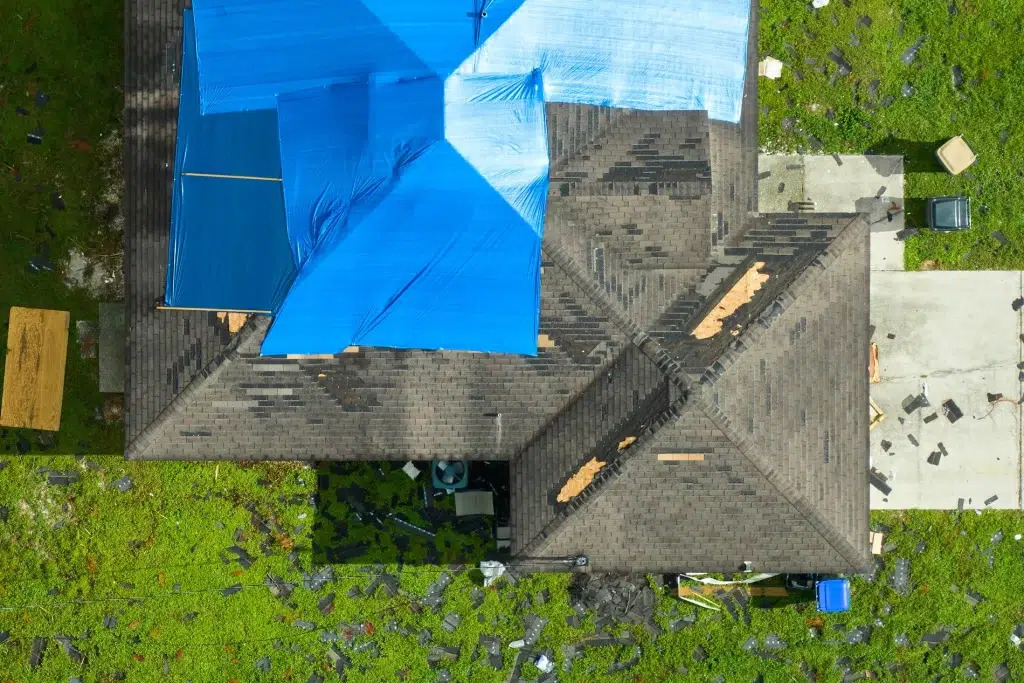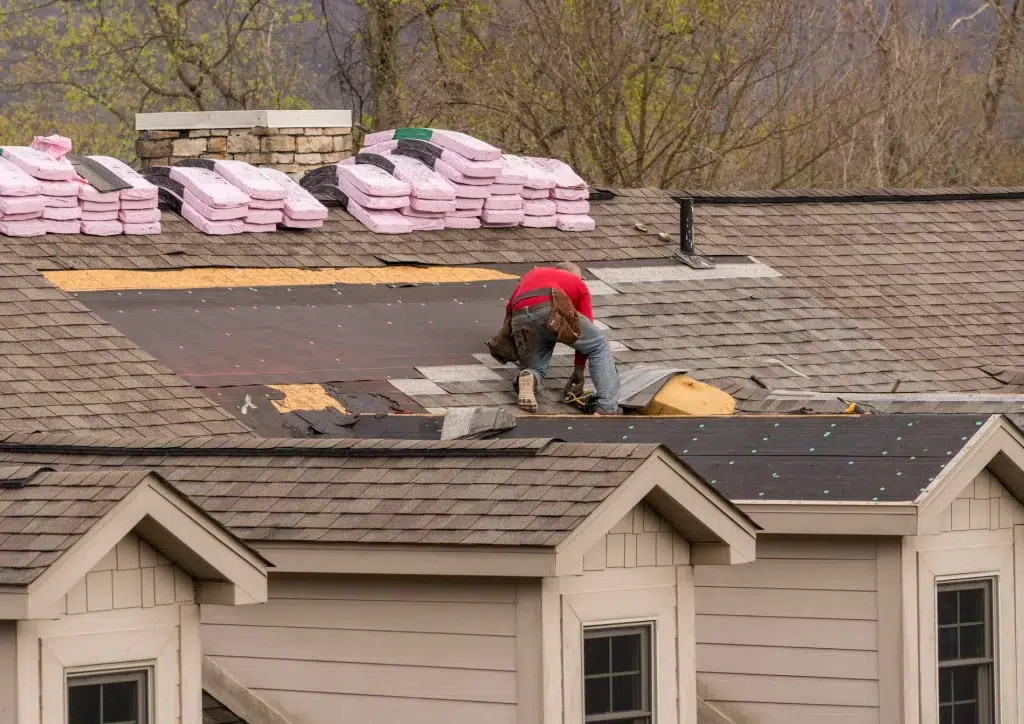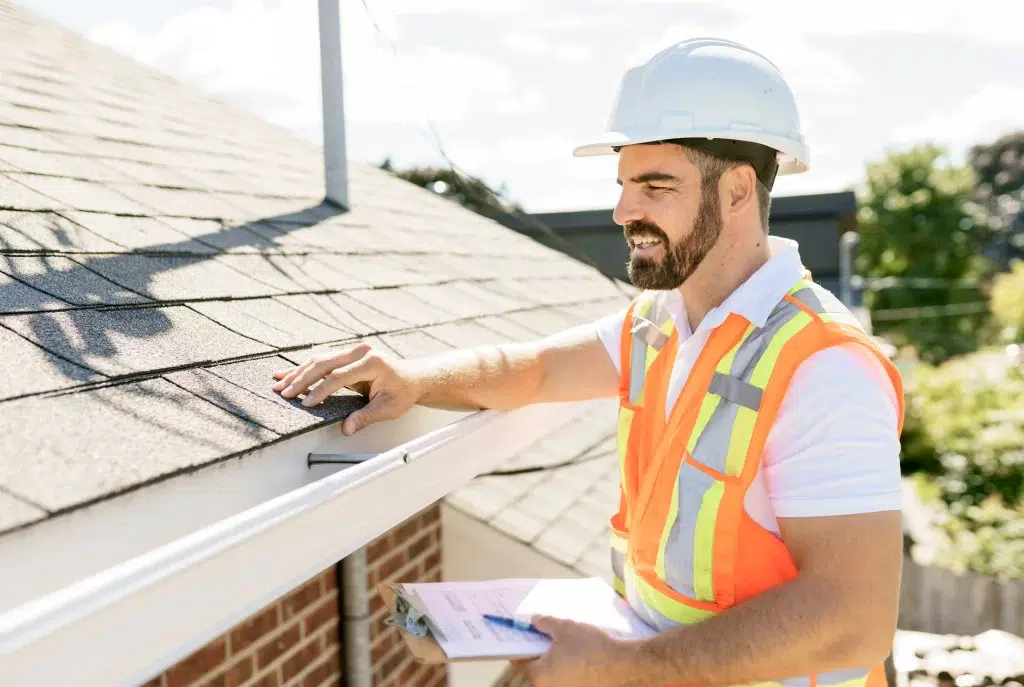If you live in Texas, you know that violent storms with high winds and flash flooding conditions threaten the state multiple times a year. Texas homeowners remain alert, watching the water rise and threaten to enter their homes. Even those who don’t live in a flood prone area are at risk for damage to their homes. One of the most common culprits is a leaky roof.
This guide will walk you through the essential actions you should take to mitigate damage and secure your home efficiently. Remember, your safety and your home’s integrity depend on a swift response to these unexpected weather events.
Assessing the Damage
When faced with a leak aftermath from a severe storm, assessing the damage promptly is key to preventing further issues. By carefully examining your property, you can gauge the severity of the situation and take necessary actions for emergency roof leak repair.
Visible Water Stains and Damage
Start by looking for visible water stains or any active dripping inside your home. These indications commonly point towards immediate repair needs. Check ceilings, walls, and areas near windows for any telltale signs of water intrusion. Don’t forget to inspect the attic as well; water stains on the underside of the roof decking can offer crucial insights into the leak’s location.
Act promptly upon spotting these signs, as they can escalate quickly, leading to more extensive damage if left unattended. Noticing water stains or active dripping should prompt you to seek emergency roof leak repair services without delay. Thoroughly check each room, paying close attention to corners and areas prone to water entry during storms.
Inspecting Attics and Ceilings
Safely inspecting your attic and ceilings post-storm is crucial. Use a flashlight to explore the attic, focusing on and identifying any signs of water infiltration or damage. Check for wet insulation, water stains, or mold growth, as these are clear indicators of a leak. On ceilings, look for discoloration, bulging spots, or peeling paint, as these are common consequences of water seepage.

Taking Immediate Action
When you notice a leaking roof, immediate action is crucial to prevent further damage. If you’re facing an emergency roof leak repair, knowing what steps to take can save your home from severe water damage. Addressing roof leaks quickly reduces the risk of structural deterioration and minimizes the chance of mold and property damage.
As you await professional help, you can manage the situation by containing any indoor leaks and protecting your belongings. Taking immediate action can save you from costly repairs down the line.

Taking Immediate Action
When you notice a leaking roof, immediate action is crucial to prevent further damage. If you’re facing an emergency roof leak repair, knowing what steps to take can save your home from severe water damage. Addressing roof leaks quickly reduces the risk of structural deterioration and minimizes the chance of mold and property damage.
As you await professional help, you can manage the situation by containing any indoor leaks and protecting your belongings. Taking immediate action can save you from costly repairs down the line.
Temporary Containment Measures
Implement immediate temporary containment measures to minimize water intrusion. Consider placing buckets strategically to catch dripping water and use tarps to cover the affected area. These stopgap solutions can help prevent water from spreading and causing additional harm to your home.
Contacting Professionals
Once you have contained the leak, promptly reach out to an experienced roofing professional for help. Roofing professionals with expertise in emergency roof leak repair will ensure long-term protection for your roof. First, they will perform a comprehensive roof inspection to assess the damage and the condition of your roof. Then, they can recommend the right repairs to address the issue promptly and effectively.
Roof Replacement as a Long-Term Solution
Sometimes, continuous repairs might not be as cost-effective as replacing your aging roof. For many homeowners in Texas, a new roof can improve property value, enhance weather resilience, and significantly affect insurance terms.
Understanding when to opt for roof replacement over repairs depends on various factors like the extent of damage and repair costs. Sometimes, replacing your roof is a more cost-effective and practical choice than continuous patchwork.


Roof Replacement as a Long-Term Solution
Sometimes, continuous repairs might not be as cost-effective as replacing your aging roof. For many homeowners in Texas, a new roof can improve property value, enhance weather resilience, and significantly affect insurance terms.
Understanding when to opt for roof replacement over repairs depends on various factors like the extent of damage and repair costs. Sometimes, replacing your roof is a more cost-effective and practical choice than continuous patchwork.
Signs It's Time for Roof Replacement
- Extensive Damage: If your roof shows signs of extensive damage, such as missing shingles, moss growth, or rotting, it may be time for a replacement. These issues can compromise the structural integrity of your roof, leading to leaks and further damage.
- Visible Aging: As roofs age, they become more susceptible to wear and tear. If your roof is visibly aging, with shingles curling or losing granules, it indicates the need for a new roof to maintain the protection of your home.
- Leaks: Persistent leaks, especially after heavy rainfall or storms, are a clear indicator that your roof needs attention. Ignoring leaks can result in water damage to your home’s interior and belongings.
Navigating Insurance Requirements for New Roofs
Installing a new roof can positively impact your insurance coverage and premiums. By proactively replacing your roof and adhering to insurance requirements, Texas homeowners can enhance their coverage and potentially reduce premiums. It’s a proactive step towards safeguarding your home and financial well-being. Here’s how you can ensure a smooth transition:
- Insurance Implications: Most insurance providers view a new roof as a reduced risk for potential claims, leading to lower premiums. By installing a new roof, you can demonstrate your commitment to maintaining your home’s safety and integrity.
- Meeting Insurer Specifications: When getting a new roof, ensure it meets your insurer’s specifications. This may include using specific materials or hiring certified contractors. Compliance with these guidelines can maximize your insurance benefits.

Preventing Future Incidents
You’ll want to stop roof leaks from happening in the future because they can cause serious damage to your home’s structure.
By taking proactive measures, you can significantly reduce the risk of roof leaks during extreme weather conditions.
Understanding these additional roof-related elements can help you make informed decisions to potentially reduce your insurance costs and ensure your home is adequately protected.

Preventing Future Incidents
You’ll want to stop roof leaks from happening in the future because they can cause serious damage to your home’s structure. By taking proactive measures, you can significantly reduce the risk of roof leaks during extreme weather conditions.
Routine Roof Inspections
Scheduling regular roof inspections is a proactive approach to identifying and addressing vulnerabilities before they escalate into major issues during storms. Professional roof inspections allow for early detection of potential weak spots. Missing shingles, damaged flashing, or deteriorating seals leave your roof vulnerable during these storms. Catch these issues before the weather event to prevent small leaks from turning into significant water damage.
Upgrading Roofing Materials
Investing in high-quality roofing materials can enhance your roof’s ability to withstand harsh weather conditions. Newer roofing materials are more durable and better at resisting wind-driven rain. These materials include impact-resistant shingles, metal roofing, and synthetic membranes.
The initial cost of upgrading roofing materials may be higher. But, the investment will reduce maintenance expenses and increase protection against future storm-related leaks.
By prioritizing routine roof inspections and investing in quality roofing materials, you can fortify your home against potential leaks caused by violent storms or extreme weather events. Taking proactive measures now can prevent the need for emergency roof leak repairs in the future, ensuring your home remains secure and resilient in the face of inclement weather.
Don't Delay, Protect Your Roof Today
When facing a leak caused by a violent storm or weather event, immediate action will prevent further damage to your home. Remember, time is of the essence when dealing with roof leaks post-storms. Prioritize emergency leak repair to safeguard your home effectively and ensure the protection of your loved ones and valuable belongings. Don’t delay in addressing the issue, act swiftly to mitigate any potential risks associated with a compromised roof.


